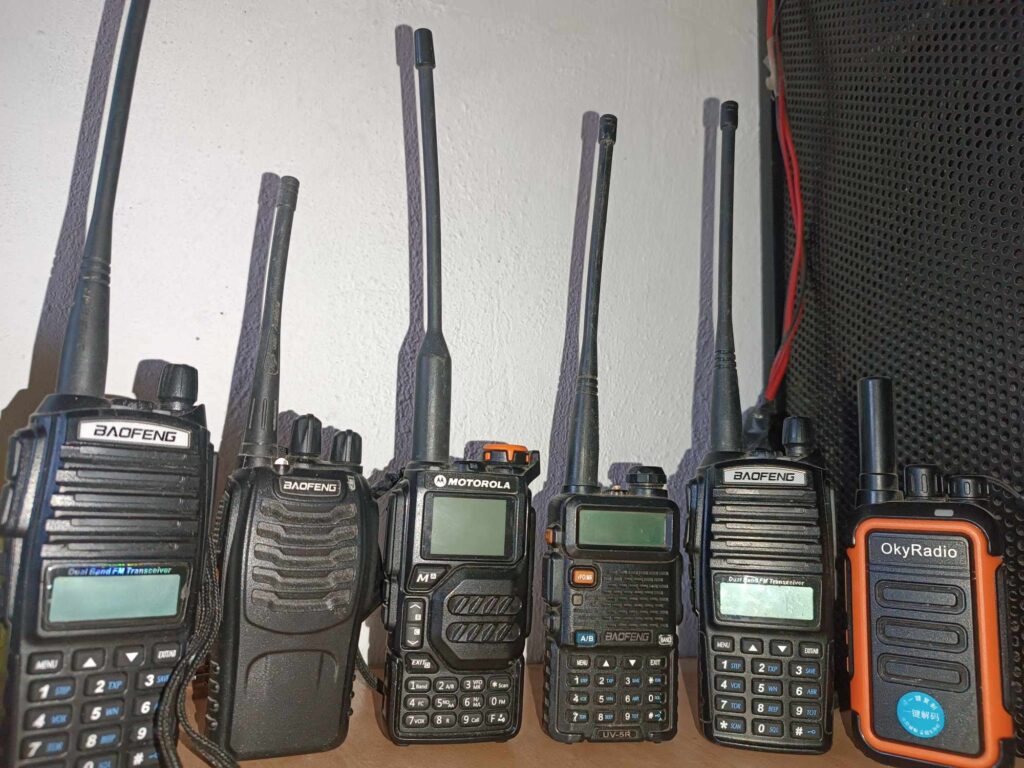
HRC members during a DX Contest using High Frequency. Contributed photo
CEBU CITY, Philippines — Are amateur radios, also called ham radios, still important these days?
Apparently so!
When cell phones, regular phones, the internet and other systems are down or overloaded, amateur radio still gets the message through.
What are Ham radios?
Amateur radio is noncommercial two-way radio communications using the radio frequency spectrum, from medium frequency (e.g., 1.8–2 megahertz) to ultrahigh frequency (up to 1300 megahertz), according to Britannica.
By using a portable or handheld radio, you can still reach your loved ones within 2-3 kilometers in an open area and 500 meters with an obstruction as long as you are on the same channel.
READ MORE:
Mandaue police receive 240 new handheld radios
In Cebu, an amateur radio club was created with the objective of helping the community during calamities such as floods, earthquakes, and typhoons.
Amateur radio is derived from “HAM” as an informal name for an amateur radio operator.
Power of radio
According to the Philippine Amateur Radio Association Inc., or PARA, some ‘HAMS’ have even received signals from Mars probes. On the other side of the scale, many ‘hams’ enjoy using very low power to communicate all over the world.
Jet Manuel, a licensed radio and amateur operator, considered the “father” of Ham Radio Cebu, Inc. (HRC), emphasized that during calamities, when most of the cell sites break down, radio is the only medium of communication left, also the cheapest.
“When the world goes silent, Ham radio is resilient,” he said.
Manuel also shared that in huge events like the Sinulog Festival, when cell sites are jammed, HRC assists in communicating for any type of emergency such as for first aid responders, delivery of food, and peace and order.
“Mao na’y power sa radio, it’s simple but kinahanglan makamao ka. Kamao ka sa sistema unsaon pag-gamit.”
Height is might
Nicolas Medalla, a member of HRC, also a licensed building electrician, shares that they also conduct lectures for radio training called “Radio 101” and antenna-making to several groups like Girls and Boy Scouts, Bureau of Fire Protection (BFP) and volunteers, Philippine Coast Guard Auxiliary (PCGA) Communications Team, School disaster response team and volunteers, and even Barangay Tanods as the first responder in a barangay.
Medalla dives into the technical side of radio, particularly in antennas. The signal can reach 5-10 kilometers if the antenna is located in a high or mountainous area.
“Height is might man basta antenna. Kung unsa katas-a ang antenna, mas taas ang coverage, mas taas ang circumference nga ma-cover,” he stated.
With a 5-watt poratable radio and 30-feet antenna, he can reach as far as Mabolo, Cebu City from Consolacion, Cebu.
They also shared that in order to be a licensed amateur radio, you have to join a radio club first and then take an exam at the National Telecommunications Commission (NTC) for responsible radio handling.
“Pwede ma-revoke ang license kung masakpan nga mag-binoang sa radio,” Medalla added.


